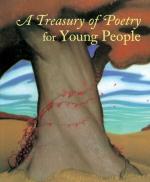|
This section contains 4,948 words (approx. 17 pages at 300 words per page) |

|
SOURCE: “The American Scene: Longfellow,” in Literary Criticism of Edgar Allan Poe, edited by Robert L. Hough, University of Nebraska Press, 1965, pp. 116-29.
One of the foremost American authors of the nineteenth century, Poe is widely regarded as the architect of the modern short story and the principal forerunner of aestheticism in America. In the following essay, he reviews Longfellow's verse, noting that his imagery and innovation are restricted by his moral didacticism.
We have said that Mr. Longfellow's conception of the aims of poesy is erroneous; and that thus, laboring at a disadvantage, he does violent wrong to his own high powers; and now the question is, what are his ideas of the aims of the muse, as we gather these ideas from the general tendency of his poems? It will be at once evident that, imbued with the peculiar spirit of German song (a pure conventionality...
|
This section contains 4,948 words (approx. 17 pages at 300 words per page) |

|


